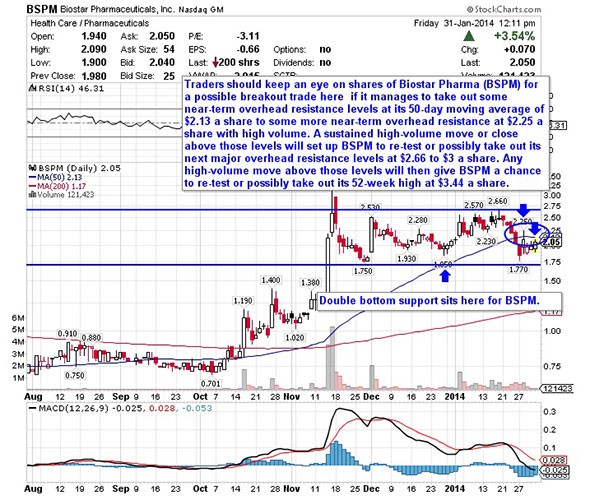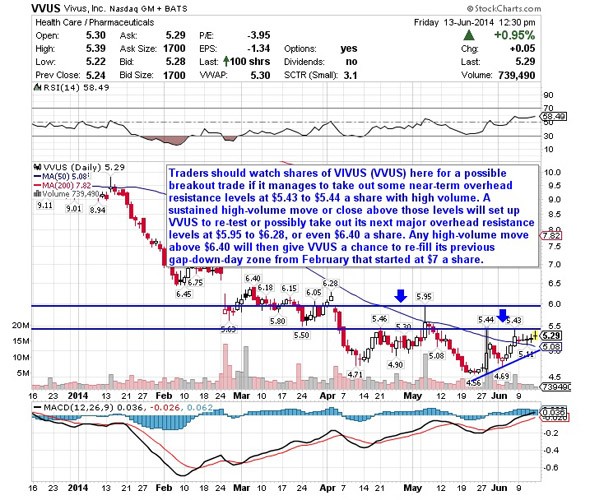Breakout Trading Technical Analysis Primer Stockpickr! Your Source for Stock Ideas
Post on: 19 Май, 2015 No Comment

By Jonas Elmerraji
Senior Contributor
03/29/11 — 05:54 PM EDT
BALTIMORE (Stockpickr ) — If you’re familiar with technical analysis. chances are you’ve at least heard the term “breakout trading” before. The foundation of the uber-successful trading systems used by some of the biggest Wall Street investment managers, breakout trading is one of the most effective technical strategies out there — and also one of the most nerve-wracking.
In this week’s technical primer, we’re going to take a look at exactly how a breakout trading strategy works, and how to implement it for your portfolio.
It’s one thing to analyze technical charts ex post to find trading opportunities — and yet another to pull the trigger on a real trade. Using a technical strategy has significant advantages. Whether used as a standalone method of analysis or as a timing supplement to fundamentals, technicals can provide significant cues about a stock’s potential price movement.
More From Stockpickr
Almost any method of analysis seems great in theory, but the money’s made where the rubber meets the road. Not surprisingly, applying technical analysis concepts to real-world markets is also where most people (particularly those with fundamental backgrounds) have the most trouble.
What Is Breakout Trading?
Breakout trading is one of the most popular methods of applying technical concepts to live financial markets. In its simplest form, breakout trading is the practice of buying stocks as they “break out” above a past resistance level or “break down” below a past support level.
The rationale for this strategy is simple: If support and resistance levels act as barriers to share price movement, then the breach of a previous support or resistance level should leave shares free to make a larger move.
That’s a fairly pragmatic approach to trading. After all, if a resistance level represents a glut of supply for shares of a stock at a particular overhead price, then a breakout above that price level should mean that those sellers are adjusting their ask prices to higher levels (or opting not to sell at all), clearing the way for shares to get bid up to higher prices.
As I said earlier, though, there are significant challenges to being a successful breakout trader.
Challenges of Breakout Trading
The biggest challenges for would-be breakout traders are psychological — particularly for investors with fundamental value backgrounds. For upward breakouts, waiting for a stock to move higher before buying can feel incredibly unnatural for an experienced value investor. And staying in the game after a string of losing trades can wear away at the confidence of even the most experienced trader.
It’s no surprise then that an estimated 90% of retail traders eventually go bust.
But it’s crucial to think like a technician if you’re going to find success as a breakout trader. Instead of using technicals as a way of predicting where share prices are headed in the future, you’re using technicals to define supply and demand characteristics that lead to a higher probability of a move in one direction than a move in the other.
In other words, breakout traders are looking for “high-probability setups” where share prices have moved outside of the price barriers created by support or resistance levels. To fundamental investors, it’s enticing to buy shares before a breakout actually happens – but the breakout is the critical element of creating that high probability setup. Before it happens, the market’s bias doesn’t give an advantage to the trader.
Lookout for Breakout Trades

The first step toward becoming a breakout trader is to be on the lookout for potential breakout trades. Historically, market technicians have done this by poring over thousands of stock charts to find those that looked primed for a break outside of a previous support or resistance level. Today, advanced quantitative screening software can take away much of that work by identifying a watch list of breakout setups in just a few minutes.
Once those setups have been identified, it’s time to set conditional alerts for each of the watch list stocks; you’ll want to know exactly when the breakout conditions are met. Normally, you can set free trade alerts through your broker’s trading platform. By using alerts instead of stop orders, you’re able to weed out stocks whose breakouts aren’t statistically valid (that is, not confirmed by a material move outside of the support or resistance level) or are just intraday whipsaws.
Factors such as exit points and stop loss levels can vary based on each trader’s preferences, but they should be predetermined before entering any trade.
Spotting successful breakout setups can take time and experience to get a handle on. Actually trading them takes even more — and the psychological fortitude to withstand a run of losing trades before booking a winner that more than makes up for them. Because breakout trading styles vary considerably, win rates for profitable systems can be below 50% or as high as 90%. Paper trading is an exceptional way to build confidence and develop your skills before putting real cash on the line.
Next week, we’ll add to your technical repertoire with another primer that will bring you closer to implementing technical analysis for your portfolio.
— Written by Jonas Elmerraji in Baltimore.
RELATED LINKS:
>>3 Stocks With Bullish Technical Setups
>>3 Breakout Stocks Trending Higher
>>Spotting a Reversal: Technical Analysis Primer
Jonas Elmerraji, based out of Baltimore, is the editor and portfolio manager of the Rhino Stock Report, a free investment advisory that returned 15% in 2008. He is a contributor to numerous financial outlets, including Forbes and Investopedia, and has been featured in Investor’s Business Daily, in Consumer’s Digest and on MSNBC.com.














